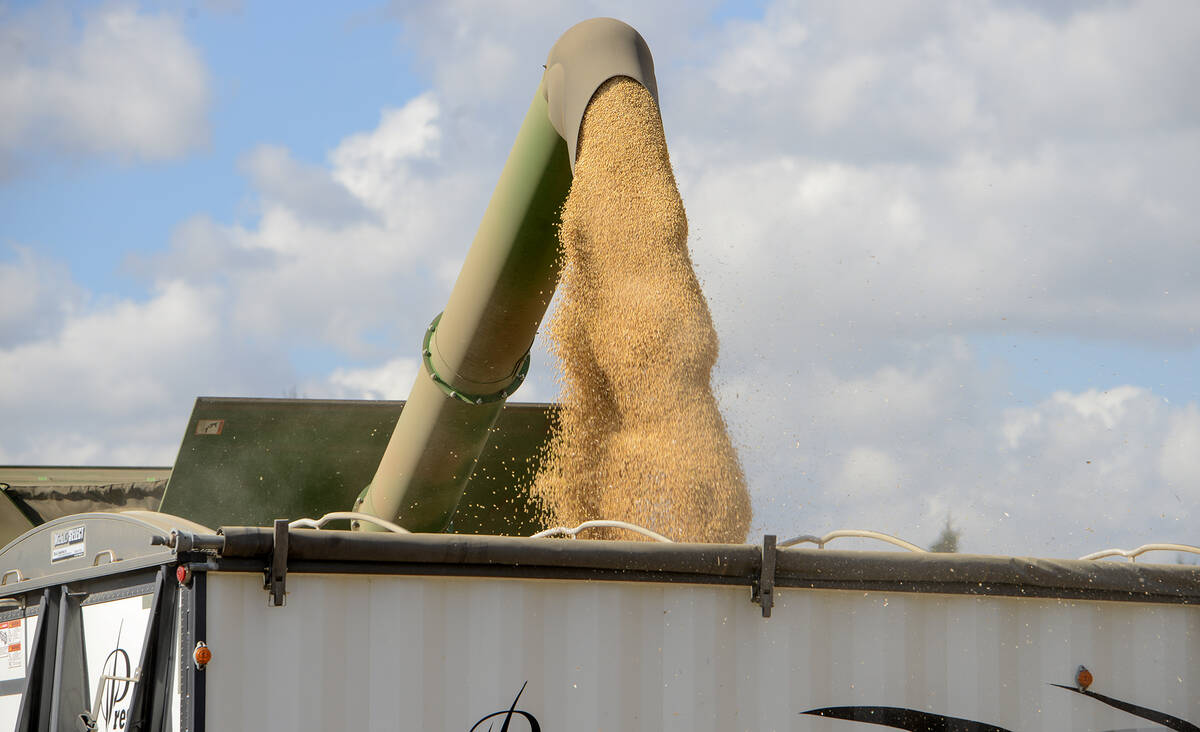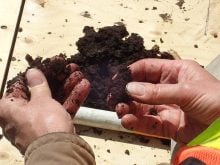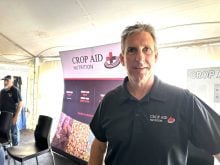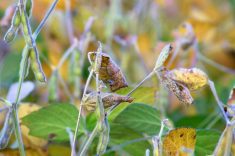Soybean growers tend to roll right after seeding; they get any stones out of the way without having to worry about breaking plants.
But when the field is dry, as fields were in the first part of Manitoba’s 2025 seeding season, farmers might want to think about wind erosion before they roll, according to Dennis Lange, a provincial pulse and soybean specialist with Manitoba Agriculture.
“When we have very dry soil conditions and we see some soil moving around … it’s just going to make matters worse,” he said.
Read Also

Grain markets hungry for U.S. data
The U.S. government shutdown meant that futures markets were left without robust grain supply information
WHY IT MATTERS: Dry conditions contribute to erosion and waves of blowing soil in rural Manitoba on days when strong winds pick up.
Lange has given similar advice in other dry years, such as 2021, when drought led to a feed crisis in the livestock sector and a drop in crop production.
If producers do have to roll, post-emergence might be a better time, he said.
“The first think you need to remember is don’t roll at the hook stage, when those beans are just pushing through,” Lange said. “That’s probably the worst time to roll, because you’re going to snap those plants and that will definitely decrease your plant stand.”
Ideally, rolling post-emergence should be done at the first trifoliate stage.
The next consideration is temperature. Thermometers should hit at least 25C before rolling.
Those warm conditions mean plant stems are often flexible enough to bend under the rolling rather than breaking.
On the proper day and at the proper time, he noted, plants won’t actually take much damage from being run over.
“Don’t roll before lunch,” Lange said. “Those plants need to be pliable.”
If a small number do break, he added, there is the potential of regrowth from auxiliary buds, although too much breakage will hit stand density.
Producers should count their breaks and guage whether they still have a healthy plant stand, which Lange puts between 140,000-160,000 plants per acre.
If a producer has a denser plant stand than that, and some stones they know they have to take care off, they have additional wiggle room and less pressure to avoid rolling, he added.
“You’re still in that magic range, and that will be fine if (some of) the plants are broken,” he said.
Watch the weather window
Manitoba typically gets a 20-day window for rolling before soybeans are out of the easily bendable window where they can be rolled without courting damage.
“If you’re looking at from the unifoliate to trifoliate stage, there’s at least 10 days there, and another 10 days on top of that, before you hit the second trifoliate stage,” Lange said. “If it’s a really good, warm day, rolling at the second trifoliate stage would be okay.”
Lange has even seen fields rolled later than that, but it’s only successful on really hot days.
If temperatures aren’t high enough one day, Lange advises producers wait. A better day may still come along. Once that weather hits, he noted, it often doesn’t take long to complete the job.
“The warmer the day, the better. So, if you get another one of those 30-degree days, that’s when you won’t see any damage to those plants,” he said.
Crusting risks
Crusting can happen in fields that have been rolled just before a pounding rain. If the rain is gentler, crusting likely won’t be a problem, Lange said.
After a rainfall, he added, it’s best to wait until the topsoil is dry again before rolling. Rolling when ground is moist brings its own crop damage.
“The roller should be clean, otherwise you’ll pull up more plants,” he said.
















